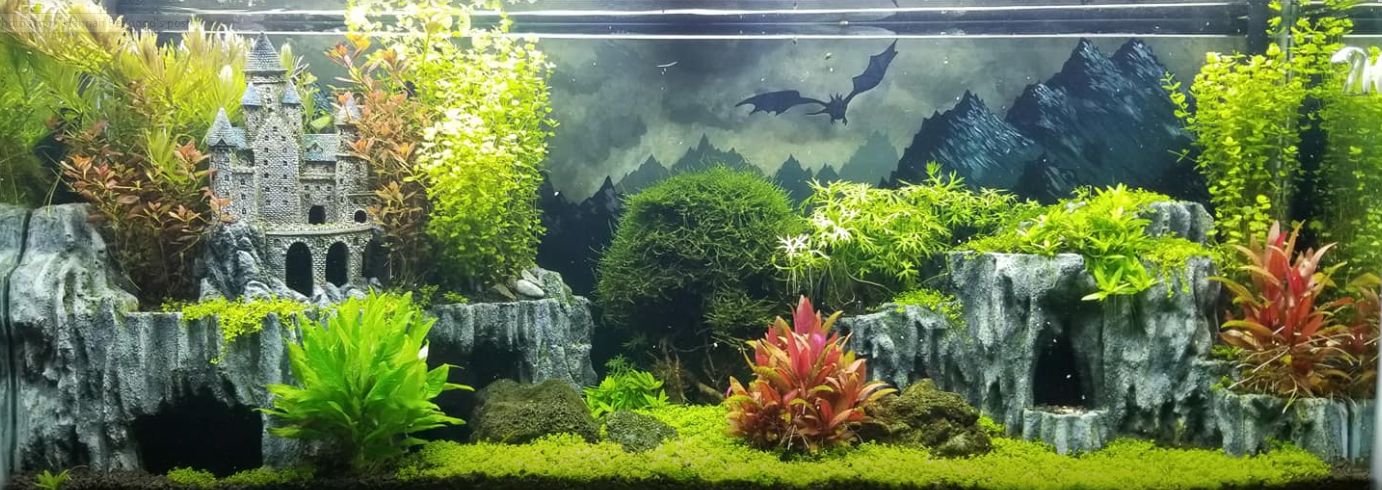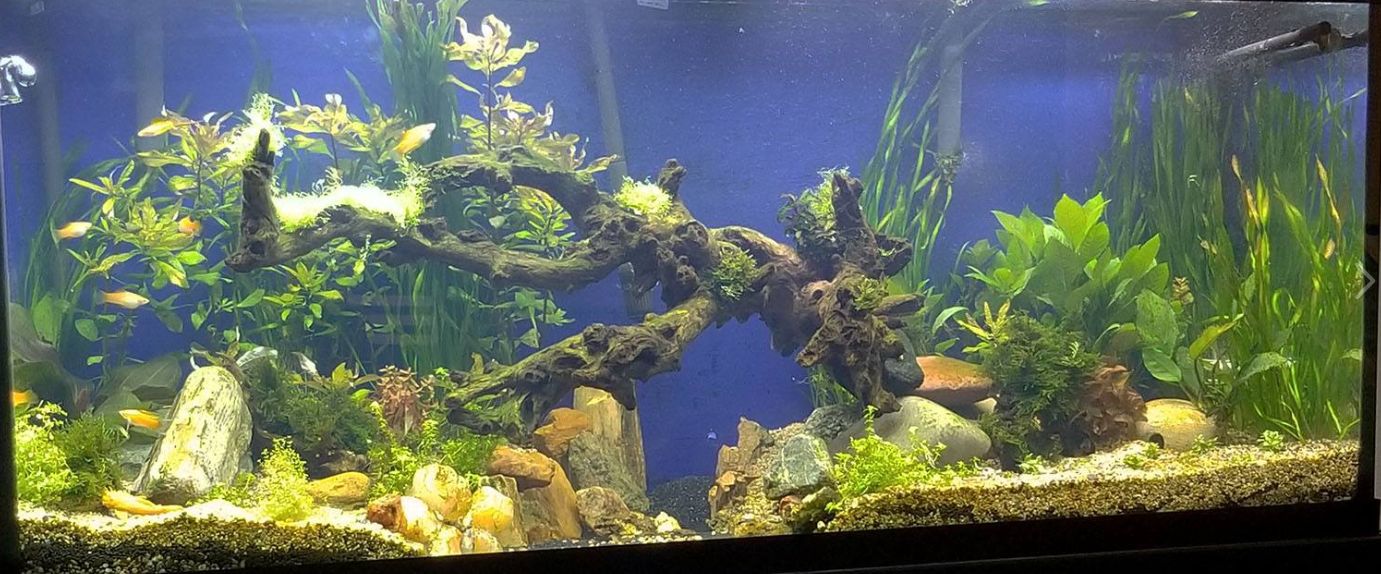Adding a “natural” fertilizer like extra fish food is not a good idea if there is little biofiltration together with fish in the aquarium. The “natural” fertilizer produces dissolved organic compounds which feed heterotrophic bacteria. These bacteria cloud the water and compromise the fish’s immune system in the aquarium. But this type of fertilization can work well with a LOT of carefully crafted biofiltration.
Some folks add extra food to the water to provide fertilizer for the plants. Diana Walstad did this with her tanks (“Ecology of the Planted Aquarium”, the bible for planted tank enthusiasts). Initially, she didn’t use any biofiltration. Using food as a fertilizer in a tank without a modicum of biofiltration is asking for trouble. Ms. Walstad ended up with huge mortalities in her rainbowfish from fish TB.
Ms. Walstad then added some biofiltration to her tanks and the problem went away. So Ms. Walstad now recommends some biofiltration, with the caveat that the outflow needs to be low in the tank and baffled so as not to create any surface disturbance.

If one adds excess food as a “fertilizer” for plants. the excess food is decomposed rapidly by fast-growing bacteria called “heterotrophic” bacteria, i.e. bacteria which eat proteins and carbohydrates for food. If there is little or no biofiltration this results in a high bacteria count in the water. The fish that are present then need to devote significant portions of their immune system to ward off attacks by these heterotrophic bacteria. And they are then far more susceptible to attack by pathogens like fish TB or columnaris bacteria.
This method CAN be made to work if one very carefully adds a lot of biofiltration to the aquarium WITHOUT adding a lot of aeration. The added biofiltration removes the dissolved organic compounds. Ms. Walstad did that and her disease problems went away. But one has to put the water back into the tank low in the aquarium and avoid high flow at the surface of the aquarium.

Natural Chemical Fertilizers
And some folks say it is best to use “natural” organic fertilizers like potassium gluconate instead of “chemical” fertilizers like potassium sulfate. But there is a snag to that line of thought. In aquarium water, potassium gluconate becomes potassium ions and gluconate ions. The potassium ions have no association with the gluconate ions after dissolution.
The potassium is just positive ions along with the sodium, calcium, and magnesium ions. The same potassium ions could come from any potassium compound like potassium sulfate.
The gluconate ions which are then floating free are carbohydrates that feed bacteria and decrease the health of the fish, just like all “natural’ fertilizers. So again, the “natural” potassium gluconate is not a good idea.

Good Fertilizer Additions
If one is using fish food as the fertilizer there are two nutrients fish food does not supply very well. Vascular plants need easily three times more potassium than most fish food supplies. And fish food has often oxidized the iron to insoluble, unavailable forms.
So supplementation with a potassium fertilizer like potassium sulfate or bicarbonate and an iron fertilizer like ferrous sulfate is often very beneficial to plant growth. 10 ppm potassium (I.e. just a “pinch” of potassium salt the size of a barley grain per ten gallons) and 0.5 ppm ferrous iron (just a tiny pinch of ferrous sulfate as small as you can get per ten gallons) once or twice a week is very useful in tanks that use fish food as fertilizer .
Meststoffen in meer detail
In de volgende links gaan we dieper in op aquarium meststoffen:
15.5.1. Kant-en-klare meststof
15.5.4. NH₄ en tabs meststoffen


